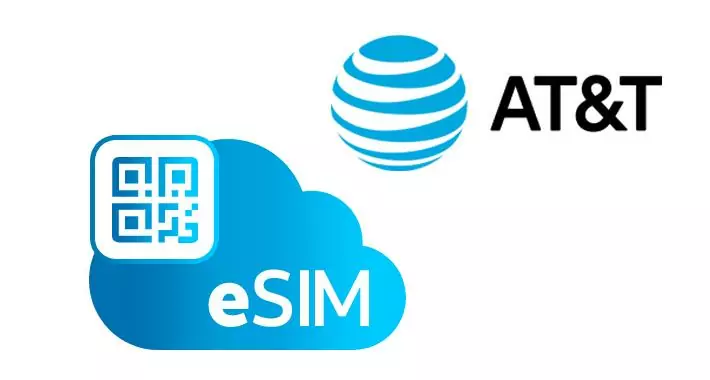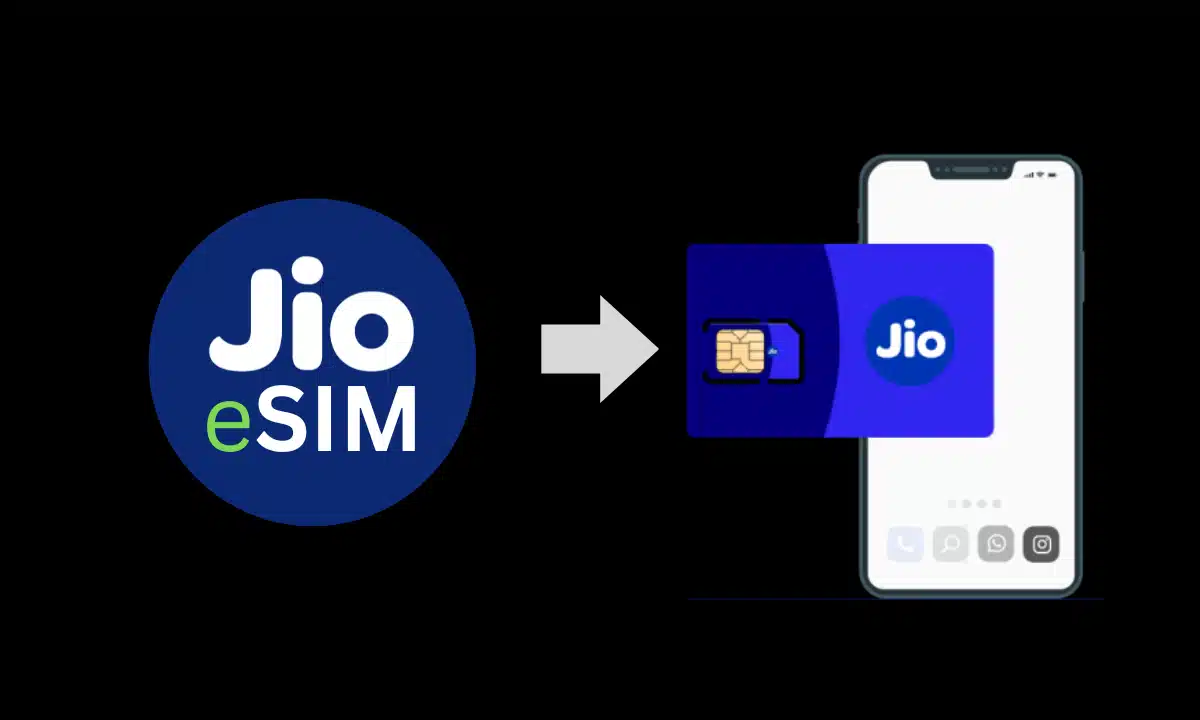
Ditch the Physical SIM – How to Activate eSIM on Your AT&T Prepaid Device
eSIM, short for embedded SIM, is a new SIM card technology that allows devices to connect to cellular networks without the need for a physical nano SIM card. ATT was one of the first major carriers in the US to introduce eSIM support for its prepaid wireless plans.
Instead of a removable SIM card, eSIM technology comes with a chip that is embedded and permanently installed onto a device’s motherboard by the manufacturer. This embedded SIM contains the same information that a physical nano SIM card would have, such as your phone number, carrier profile information, and other data.
With eSIM, the process of selecting, activating, and managing cellular plans is handled digitally through software rather than physically swapping out SIM cards.
Some key benefits of eSIM include:
-
More convenient setup and switching between cellular plans – eSIM allows you to quickly download and install carrier profiles over the air without having to obtain a new physical nano SIM card. This makes it easier to activate or switch between cellular plans.
-
Dual SIM functionality – Devices with eSIM support can have both an eSIM profile and a nano SIM card, allowing you to have two different phone numbers or carriers on one device.
-
Better security – eSIM can’t be removed or swapped, which helps prevent SIM swapping fraud. The digital nature of eSIM also makes it more difficult to duplicate.
-
Better design – With no physical nano SIM card required, manufacturers can make devices thinner and remove SIM card trays and slots.
-
Remote provisioning – eSIM profiles can be set up and provisioned remotely, allowing for easier setup of cellular connectivity across large fleets of devices like wearables, tablets, and laptops.
So in summary, eSIM brings greater flexibility, security, and convenience for connecting to cellular networks through an integrated, digital SIM solution. It eliminates the need for physical SIM cards.
ATT’s Prepaid eSIM Offering
The eSIM technology allows customers to activate service without needing to insert a physical SIM card.
AT&T offers eSIM support on most of its prepaid phone plans. This includes the basic Unlimited Talk & Text prepaid plan as well as data options like the $40 8GB data plan and the $50 Unlimited data prepaid plan. The availability of eSIM makes it easy to quickly set up and activate AT&T Prepaid service.
To use eSIM on AT&T Prepaid, you’ll first need a compatible iPhone model – XS, XS Max, XR, and newer iPhones. During the activation process, you simply scan a QR code provided by AT&T instead of inserting a physical SIM card. This instantly activates and connects your AT&T Prepaid plan with your iPhone.
The eSIM activation process can be done right from your phone using the AT&T Prepaid app. You can also activate by contacting AT&T Prepaid Support or going to an AT&T store. Once activated, you can manage your AT&T Prepaid account directly from the app.
Compatible Devices
AT&T Prepaid plans support eSIM technology on various devices. However, availability and compatibility can vary, and it’s always best to check with AT&T directly for the most current information. Typically, devices that are compatible with AT&T Prepaid eSIMs include:
- Apple iPhone: Newer models starting from the iPhone XS, XS Max, XR, and later, including the entire iPhone 11, 12, 13, and 14 series, as well as the SE (2nd generation and later).
- Apple iPad: Recent iPad Pro, iPad Air, and iPad mini models with cellular capabilities.
- Apple Watch: Series 3 and later (GPS + Cellular models) that support eSIM.
- Samsung Galaxy: Recent high-end models such as the Galaxy S20, S21, S22, and S23 series, along with the Galaxy Z Flip and Galaxy Z Fold series.
- Google Pixel: Starting from Pixel 3a and later, including the Pixel 4, 5, 6, 7 and 8 series.
- Microsoft Surface: Certain models of the Surface Pro have LTE support.
These devices are generally capable of using an eSIM in place of a physical SIM card, allowing for dual SIM functionality or a more straightforward setup process. The specific models and support might vary, so it’s important to ensure your device is unlocked and compatible with AT&T Prepaid services. For the most accurate and updated information, visiting an AT&T store or contacting their customer service is advisable.
Setting up eSIM on Compatible Devices
eSIM setup will vary slightly depending on if you have an iPhone or Android device. Here are step-by-step guides for both:
Setting up eSIM on iPhone
- Go to Settings > Cellular > Add Cellular Plan
- Tap Set Up Cellular Plan Manually.
- Scan or enter the eSIM QR code provided by ATT. This will add the cellular plan profile.
- Follow the onscreen prompts to activate the eSIM and transfer your phone number.
- Once complete, you will see the eSIM plan listed under Cellular Plans.
Setting up eSIM on Android
- Install the eSIM activation app provided by ATT. This is available on the Google Play Store.
- Open the eSIM app and select Activate New Plan.
- Scan or enter the eSIM QR code provided by ATT.
- Follow the prompts to activate the eSIM and transfer your phone number.
- Once finished, open your phone’s Settings to confirm the eSIM is active under the SIM cards menu.
The process involves scanning a unique QR code provided by ATT after signing up for a prepaid eSIM plan. This loads the plan profile. You can then transfer your number online or by contacting customer service.
Transferring Phone Number to eSIM
To transfer your existing phone number to an eSIM line with AT&T Prepaid, follow these steps:
-
Activate your eSIM line first without transferring your number. You can do this by scanning the QR code provided or downloading the eSIM profile. This will activate a new phone number on the eSIM line.
-
Once your eSIM line is active, call AT&T Prepaid Customer Service at 1-800-901-9878. Let them know you want to transfer your existing AT&T Prepaid number to your new eSIM line.
-
The representative will take some information to verify your account and submit the transfer request. This usually takes 15–30 minutes to complete.
-
You will receive a text confirmation when the transfer is complete. At this point, your existing phone number will be active on the eSIM line.
-
You can now safely remove or disable the physical SIM card that was using your old phone number. Going forward, your number will work on the eSIM profile.
-
Reboot your phone to ensure everything is working properly. Make a test call to confirm your transferred number is active on the eSIM line.
-
If you run into any issues with call or data connectivity after the transfer, contact AT&T Prepaid Customer Service for troubleshooting assistance.
The process is relatively straightforward, but make sure to contact AT&T Prepaid Customer Service to initiate the phone number transfer. Doing it yourself from the account dashboard may not properly transfer the number over to eSIM in some cases.
Multiple eSIM Profiles
One of the major benefits of eSIM technology is the ability to store multiple profiles on a single eSIM. This allows ATT Prepaid customers to have separate eSIM profiles for different purposes, such as one for personal use and one for work.
With multiple eSIM profiles, switching between them is quick and easy. From the device settings, users can select which eSIM profile they want to activate. The profile switch usually only takes a few seconds to complete, allowing seamless transitions between personal and work numbers, domestic and international plans, or any other eSIM profiles on the device.
Some key advantages of having multiple eSIM profile capabilities include:
- Separating personal and work numbers without carrying multiple physical SIM cards
- Easily switching between domestic and international plans when traveling abroad
- Ability to quickly trial new carrier plans by downloading eSIM profiles
- Adding family member plans for seamless connectivity on a shared device
The convenience of having multiple active profiles on a single eSIM is a major differentiator of eSIM technology compared to traditional physical SIM cards. ATT Prepaid users can take full advantage of this flexibility.
eSIM Benefits for ATT Prepaid
One of the biggest benefits of using eSIM with ATT’s prepaid plans is the convenience and flexibility it provides. With eSIM technology, there is no need for a physical SIM card to connect your device to the ATT network and activate service.
This makes the activation process quick and seamless. You can easily switch carrier profiles and plans directly from your phone’s settings without having to obtain new SIM cards. eSIM also allows you to store multiple profiles on one device, so you can have separate plans for work and personal use without carrying multiple phones.
The eSIM integration enables easy transfer of your existing phone number to the eSIM profile. You don’t have to get new phone numbers when you switch plans or devices. It also facilitates seamless international roaming when traveling abroad, as you can simply download the required carrier profile and activate it remotely.
Overall, eSIM support on ATT’s prepaid plans delivers a simplified user experience. The ability to effortlessly switch plans and transfer numbers leads to greater flexibility and convenience for customers. With no physical SIM cards involved, eSIM prepaid plans reduce hassles and make cellular data connectivity more streamlined.
Limitations of AT&T Prepaid eSIM
AT&T’s prepaid eSIM offering has some limitations to be aware of:
-
Limited phone compatibility – Currently, only a handful of phones are compatible with AT&T’s prepaid eSIM service. These include recent iPhone models like the iPhone XS, iPhone XS Max, and iPhone XR. Android options are more limited, with only a few flagship Samsung Galaxy models supporting eSIM on AT&T prepaid plans. This makes it difficult to bring many existing unlocked phones over to AT&T prepaid service using eSIM.
-
Activation and setup can be tricky – getting eSIM activated and set up properly on AT&T prepaid requires going through some convoluted steps. You need to scan a QR code or enter an eSIM activation code during the activation process, which can be confusing. There have also been reports of activation failures, requiring multiple attempts to get eSIM working. The setup process is not straightforward and lacks the simplicity of swapping in a regular nano SIM card.
So while AT&T’s prepaid eSIM offering provides some convenience, limited device support and tricky activation steps are current limitations. As eSIM technology matures, the experience should improve over time across a wider range of devices. But for now, there are some restrictions compared to using traditional physical SIM cards for AT&T prepaid service.
Troubleshooting ATT Prepaid eSIM
Some common issues that users may encounter with ATT Prepaid eSIM include activation failures, inability to connect to data or make calls, and problems switching between eSIM profiles. Here are some troubleshooting tips:
-
If you are unable to activate your eSIM, make sure your device is eSIM compatible and you have downloaded the latest carrier settings. Restart your phone and try the activation process again.
-
If you can’t connect to data or voice networks, check that the correct eSIM profile is enabled in your settings. Toggle airplane mode on and off to force re-registration with the network.
-
When switching eSIM profiles, disable the previous profile first before enabling the new one to avoid conflicts. Reset network settings if still unable to switch profiles.
-
Update your phone software and carrier settings to the latest version for compatibility fixes.
-
Contact ATT Prepaid customer support for further assistance if the above steps do not resolve your eSIM issues. Support options include chat, phone calls, and visiting an ATT store. Have your IMEI number and account details ready when reaching out for support.
-
As a last resort, you may need to get your eSIM QR code re-sent from ATT to re-add the eSIM profile manually on your phone if activation consistently fails.
Getting timely help with any eSIM problems is important to restore connectivity quickly. ATT offers 24/7 customer service support through multiple channels to troubleshoot and fix any issues that come up with your Prepaid eSIM service.
The Future of eSIM
eSIM technology is expected to see rapid growth and adoption in the coming years. As more device manufacturers build eSIM support into their products, and more carriers offer eSIM plans, consumer adoption of eSIM will accelerate.
For consumers, the benefits of eSIM will become more apparent as it eliminates the need to physically switch out SIM cards when changing carriers. Users will have the ability to quickly and seamlessly select a new carrier or data plan through software alone. This opens up new flexibility for consumers to optimize price and coverage as their needs change over time.
For mobile carriers, eSIM also presents an opportunity to lower costs associated with distributing and supporting physical SIM cards. However, it may also intensify competition as it becomes easier for subscribers to switch providers. Carriers will need to focus on network quality, customer service, and plan pricing to retain customers.
Overall, the widespread adoption of eSIM has the potential to fundamentally change the way consumers relate to mobile carriers. It will likely lead to increased competition, more pricing transparency, and greater flexibility for consumers to customize their mobile plans over time as their needs evolve. Mobile carriers will need to adapt to this new environment to drive acquisition and retention.













